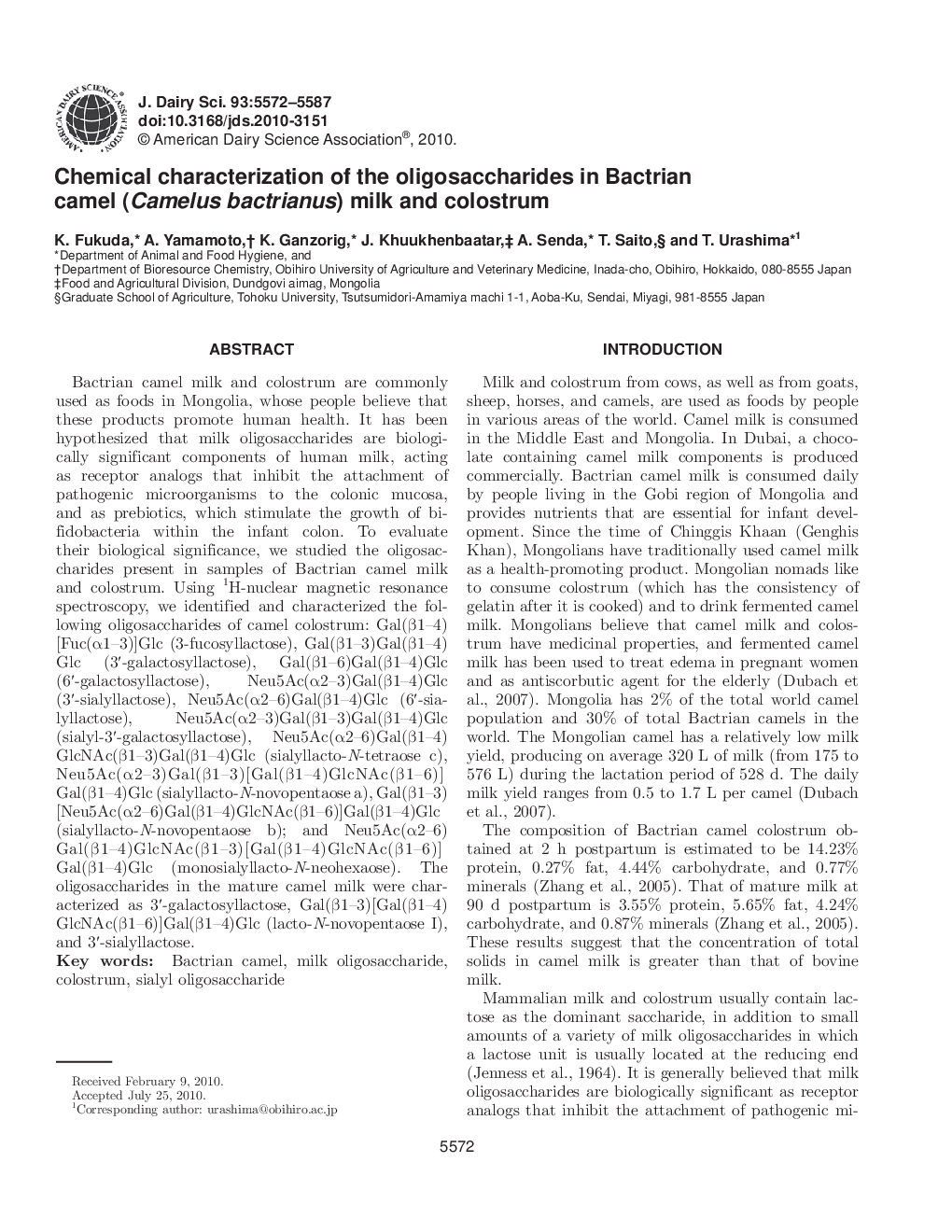| Article ID | Journal | Published Year | Pages | File Type |
|---|---|---|---|---|
| 10979148 | Journal of Dairy Science | 2010 | 16 Pages |
Abstract
Bactrian camel milk and colostrum are commonly used as foods in Mongolia, whose people believe that these products promote human health. It has been hypothesized that milk oligosaccharides are biologically significant components of human milk, acting as receptor analogs that inhibit the attachment of pathogenic microorganisms to the colonic mucosa, and as prebiotics, which stimulate the growth of bifidobacteria within the infant colon. To evaluate their biological significance, we studied the oligosaccharides present in samples of Bactrian camel milk and colostrum. Using 1H-nuclear magnetic resonance spectroscopy, we identified and characterized the following oligosaccharides of camel colostrum: Gal(β1-4)[Fuc(α1-3)]Glc (3-fucosyllactose), Gal(β1-3)Gal(β1-4)Glc (3â²-galactosyllactose), Gal(β1-6)Gal(β1-4)Glc (6â²-galactosyllactose), Neu5Ac(α2-3)Gal(β1-4)Glc (3â²-sialyllactose), Neu5Ac(α2-6)Gal(β1-4)Glc (6â²-sialyllactose), Neu5Ac(α2-3)Gal(β1-3)Gal(β1-4)Glc (sialyl-3â²-galactosyllactose), Neu5Ac(α2-6)Gal(β1-4)GlcNAc(β1-3)Gal(β1-4)Glc (sialyllacto-N-tetraose c), Neu5Ac(α2-3)Gal(β1-3)[Gal(β1-4)GlcNAc(β1-6)]Gal(β1-4)Glc (sialyllacto-N-novopentaose a), Gal(β1-3)[Neu5Ac(α2-6)Gal(β1-4)GlcNAc(β1-6)]Gal(β1-4)Glc (sialyllacto-N-novopentaose b); and Neu5Ac(α2-6)Gal(β1-4)GlcNAc(β1-3)[Gal(β1-4)GlcNAc(β1-6)]Gal(β1-4)Glc (monosialyllacto-N-neohexaose). The oligosaccharides in the mature camel milk were characterized as 3â²-galactosyllactose, Gal(β1-3)[Gal(β1-4)GlcNAc(β1-6)]Gal(β1-4)Glc (lacto-N-novopentaose I), and 3â²-sialyllactose.
Related Topics
Life Sciences
Agricultural and Biological Sciences
Animal Science and Zoology
Authors
K. Fukuda, A. Yamamoto, K. Ganzorig, J. Khuukhenbaatar, A. Senda, T. Saito, T. Urashima,
